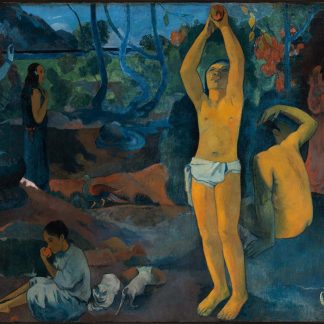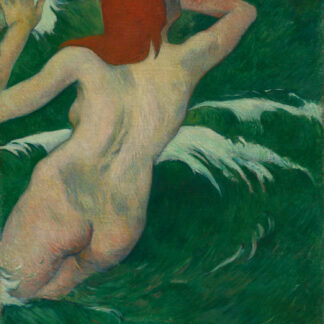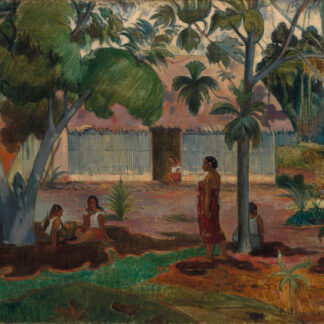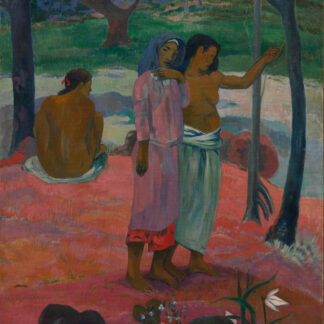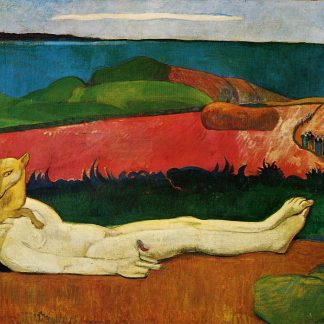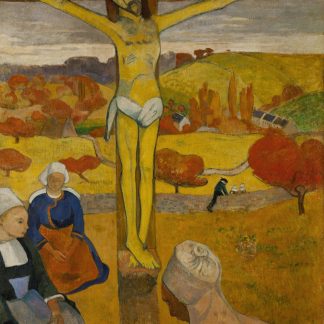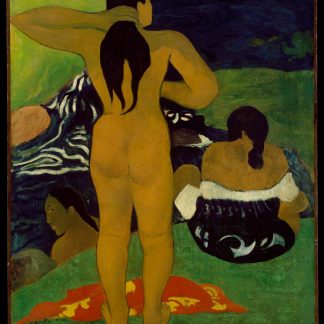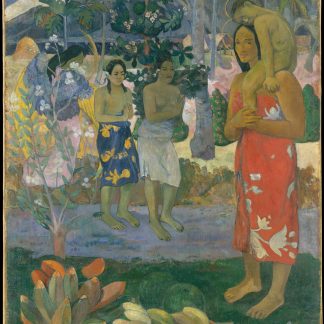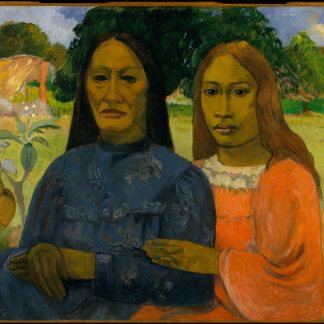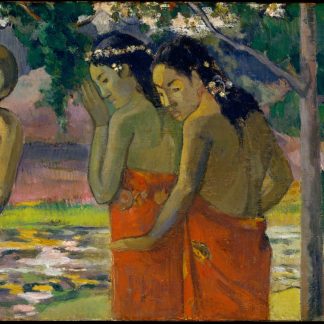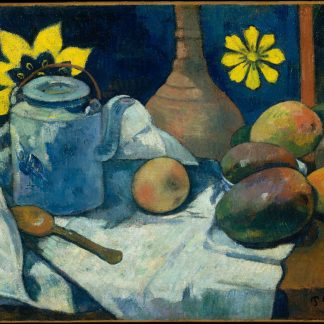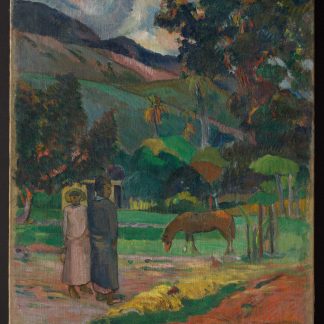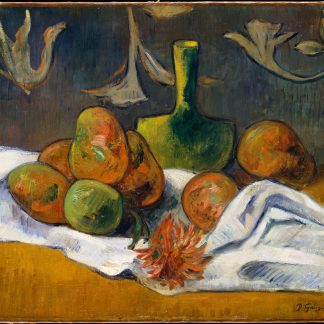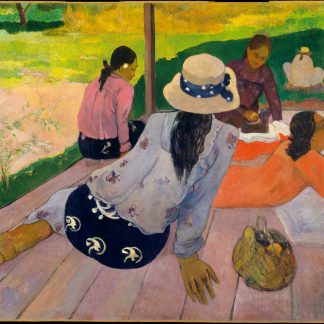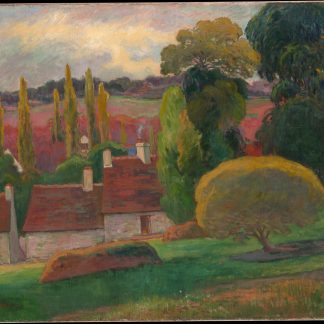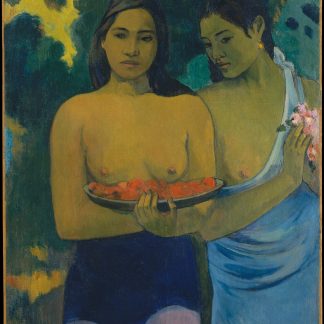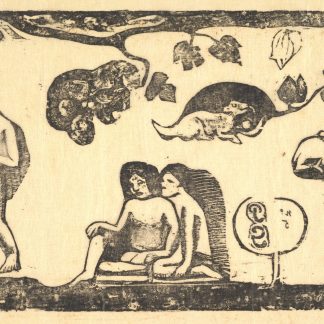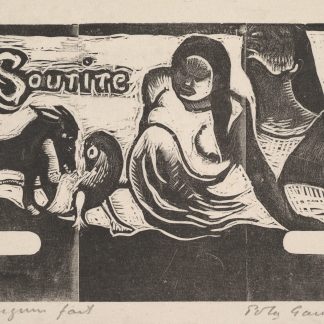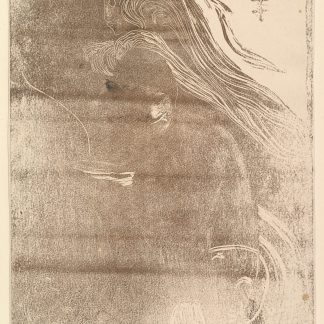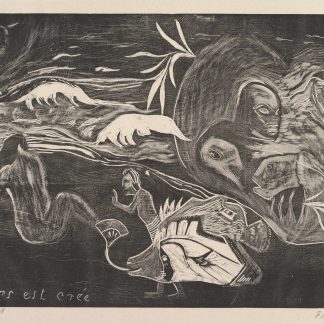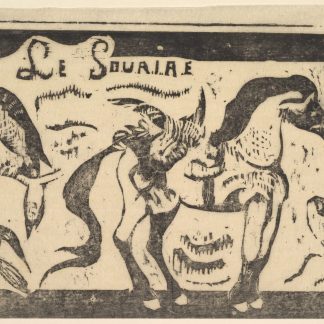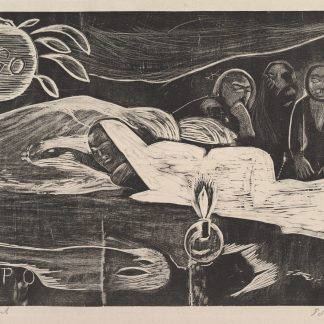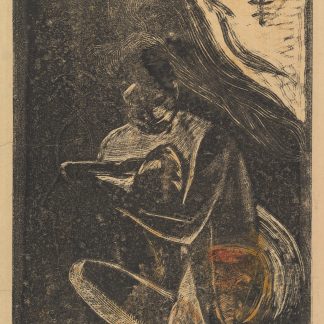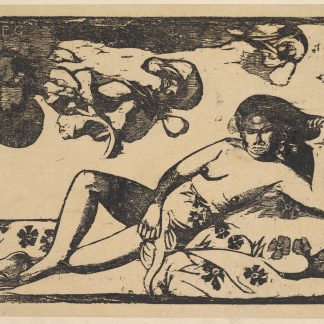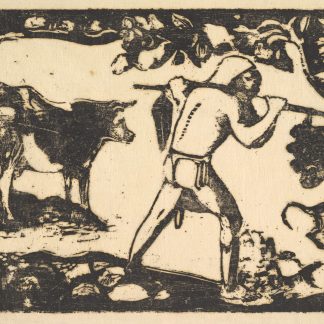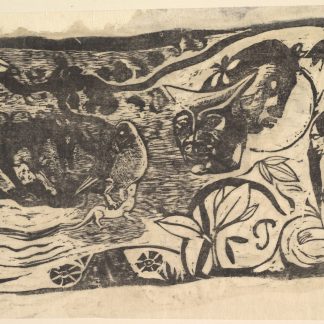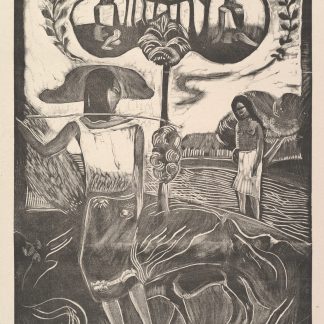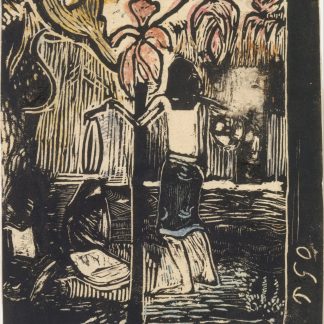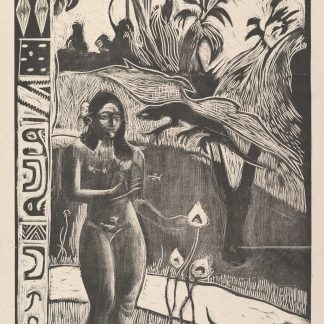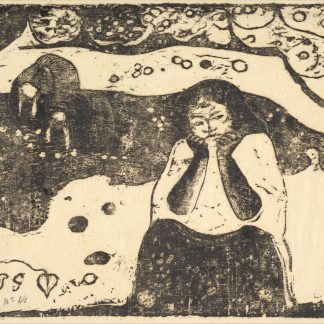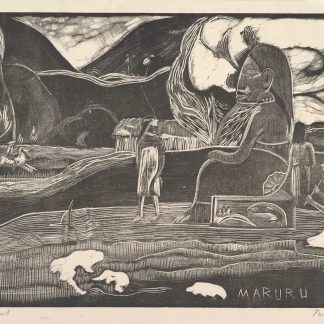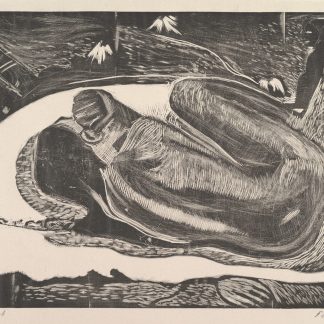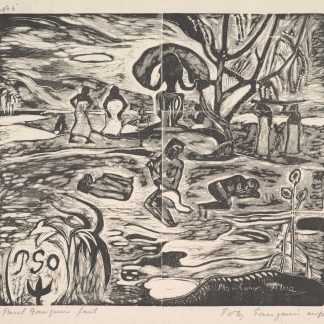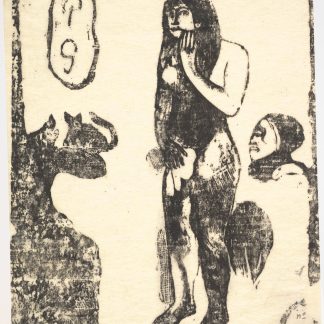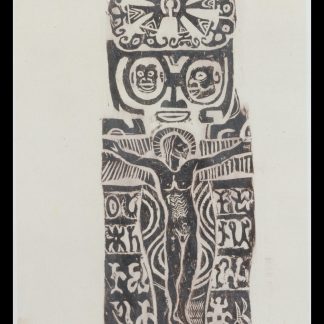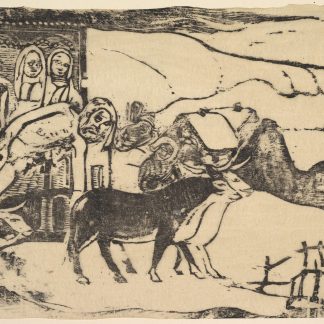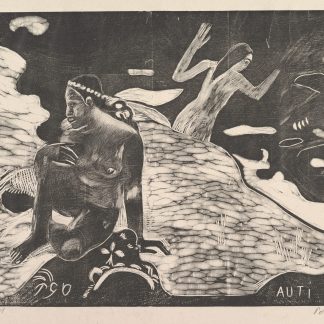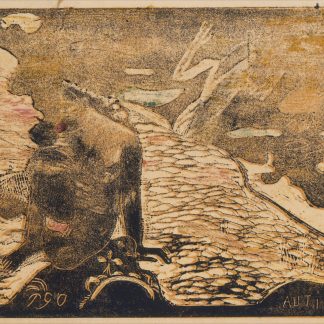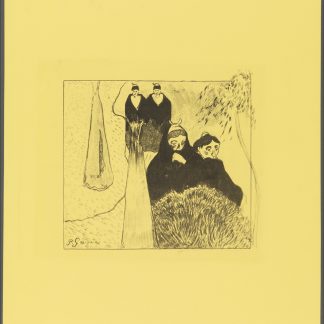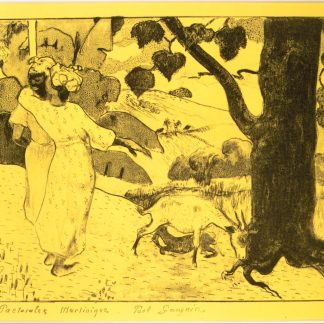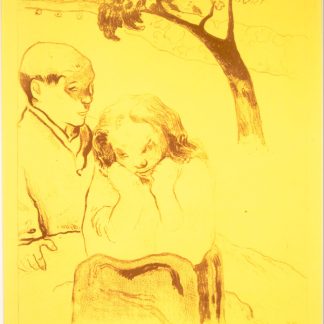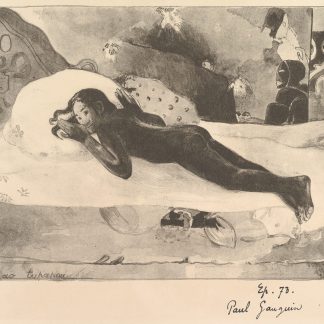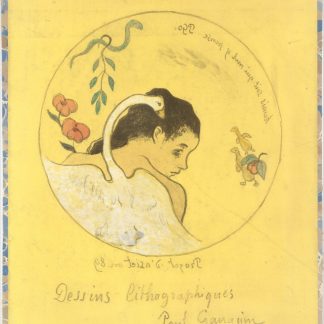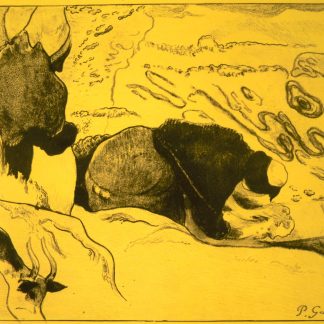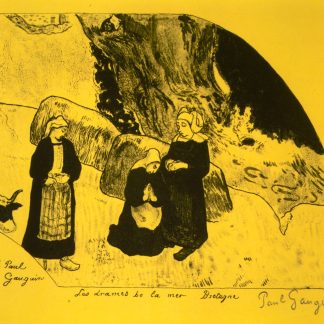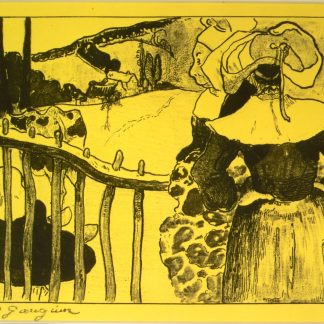Paul Gauguin (1848-1903) was a French painter who was associated with the Post-Impressionist movement. He is best known for his paintings of the South Pacific, where he lived for several years and developed a style that combined elements of traditional Polynesian art with the techniques of European painting. Gauguin’s work is notable for its bold colors, flattened forms, and its use of symbolism to convey meaning.
Gauguin was interested in the spiritual and mystical aspects of life, and his paintings often reflect this fascination. He was particularly drawn to the primitive cultures of Polynesia, and his paintings often depict scenes of daily life, religious rituals, and other aspects of Polynesian culture. Gauguin’s work was also marked by a rejection of the traditional rules of academic painting and a desire to create something new and original.
Despite his controversial reputation, Gauguin’s legacy as an artist has been significant. He was a major influence on the development of modern art, and his work has inspired generations of artists. Gauguin’s ability to combine the techniques of European painting with the motifs and symbolism of non-Western cultures has had a lasting impact on the world of art and continues to fascinate and inspire people today.
Showing 1–50 of 56 results
-

Where Do We Come From? What Are We? Where Are We Going?
Gauguin, Paul From $40.19 Select options This product has multiple variants. The options may be chosen on the product page -

In The Waves Dans Les Vagues 1889. Oil On Fabric
Gauguin, Paul From $28.69 Select options This product has multiple variants. The options may be chosen on the product page -

The Large Tree 1891
Gauguin, PaulUncategorized, Best Sellers, Giclee Prints
From $28.69 Select options This product has multiple variants. The options may be chosen on the product page -

The Call 1902. Oil On Fabric
Gauguin, Paul From $28.69 Select options This product has multiple variants. The options may be chosen on the product page -

The Loss of Virginity Awakening of Spring
Gauguin, Paul From $28.69 Select options This product has multiple variants. The options may be chosen on the product page -

The Yellow Christ
Gauguin, Paul From $28.69 Select options This product has multiple variants. The options may be chosen on the product page -

Tahitian Women Bathing
Gauguin, Paul From $28.69 Select options This product has multiple variants. The options may be chosen on the product page -

Ia Orana Maria (Hail Mary)
Gauguin, Paul From $28.69 Select options This product has multiple variants. The options may be chosen on the product page -

Two Women
Gauguin, Paul From $28.69 Select options This product has multiple variants. The options may be chosen on the product page -

Three Tahitian Women
Gauguin, Paul From $28.69 Select options This product has multiple variants. The options may be chosen on the product page -

Still Life with Teapot and Fruit
Gauguin, Paul From $28.69 Select options This product has multiple variants. The options may be chosen on the product page -

Tahitian Landscape
Gauguin, Paul From $28.69 Select options This product has multiple variants. The options may be chosen on the product page -

Still Life
Gauguin, Paul From $28.69 Select options This product has multiple variants. The options may be chosen on the product page -

The Siesta
Gauguin, Paul From $28.69 Select options This product has multiple variants. The options may be chosen on the product page -

A Farm in Brittany
Gauguin, Paul From $28.69 Select options This product has multiple variants. The options may be chosen on the product page -

Two Tahitian Women
Gauguin, Paul From $28.69 Select options This product has multiple variants. The options may be chosen on the product page -

Women, Animals, and Foliage
Gauguin, Paul From $34.44 Select options This product has multiple variants. The options may be chosen on the product page -

Eve
Gauguin, Paul From $28.69 Select options This product has multiple variants. The options may be chosen on the product page -

Le Sourire
Gauguin, Paul From $28.69 Select options This product has multiple variants. The options may be chosen on the product page -

Here we make love
Gauguin, Paul From $28.69 Select options This product has multiple variants. The options may be chosen on the product page -

The Universe is Created (L’Univers est créé), from Fragrance (Noa Noa)
Gauguin, Paul From $28.69 Select options This product has multiple variants. The options may be chosen on the product page -

Le Sourire;Taiti (Smile; Tahiti)
Gauguin, Paul From $28.69 Select options This product has multiple variants. The options may be chosen on the product page -

Te Po
Gauguin, Paul From $28.69 Select options This product has multiple variants. The options may be chosen on the product page -

Here We Make Love (Te Faruru), from Fragrance (Noa Noa)
Gauguin, Paul From $28.69 Select options This product has multiple variants. The options may be chosen on the product page -

The Queen of Beauty — Langorous
Gauguin, Paul From $28.69 Select options This product has multiple variants. The options may be chosen on the product page -

Tahitian Carrying Bananas
Gauguin, Paul From $28.69 Select options This product has multiple variants. The options may be chosen on the product page -

Woodcut with a Horned Head
Gauguin, Paul From $28.69 Select options This product has multiple variants. The options may be chosen on the product page -

Noa Noa
Gauguin, Paul From $28.69 Select options This product has multiple variants. The options may be chosen on the product page -

Fragrance (Noa Noa), small block
Gauguin, Paul From $28.69 Select options This product has multiple variants. The options may be chosen on the product page -

Delightful Land
Gauguin, Paul From $28.69 Select options This product has multiple variants. The options may be chosen on the product page -

Human Misery
Gauguin, Paul From $28.69 Select options This product has multiple variants. The options may be chosen on the product page -

Maruru
Gauguin, Paul From $28.69 Select options This product has multiple variants. The options may be chosen on the product page -

Spirit of the Dead Watching (Manao Tupapau), from Fragrance (Noa Noa)
Gauguin, Paul From $28.69 Select options This product has multiple variants. The options may be chosen on the product page -

The Devil Speaks
Gauguin, Paul From $28.69 Select options This product has multiple variants. The options may be chosen on the product page -

The Day of God
Gauguin, Paul From $28.69 Select options This product has multiple variants. The options may be chosen on the product page -

Eve
Gauguin, Paul From $28.69 Select options This product has multiple variants. The options may be chosen on the product page -

Christ on the Cross
Gauguin, Paul From $28.69 Select options This product has multiple variants. The options may be chosen on the product page -

Le Calvarie Breton
Gauguin, Paul From $28.69 Select options This product has multiple variants. The options may be chosen on the product page -

Auti Te Pape
Gauguin, Paul From $28.69 Select options This product has multiple variants. The options may be chosen on the product page -

Auti Te Pape
Gauguin, Paul From $28.69 Select options This product has multiple variants. The options may be chosen on the product page -

Old Women of Arles, from the Volpini Suite: Dessins lithographiques
Gauguin, Paul From $28.69 Select options This product has multiple variants. The options may be chosen on the product page -

Martinique Pastorals, from the Volpini Suite: Dessins lithographiques
Gauguin, Paul From $28.69 Select options This product has multiple variants. The options may be chosen on the product page -

Human Misery, from the Volpini Suite: Dessins lithographiques
Gauguin, Paul From $28.69 Select options This product has multiple variants. The options may be chosen on the product page -

Spirit of the Dead Watching (Manao Tupapau)
Gauguin, Paul From $28.69 Select options This product has multiple variants. The options may be chosen on the product page -

(Leda”) Design for a Plate: Shame on Those Who Evil Think (Honi Soit Qui Mal y Pense) ; cover illustration for the “Volpini Suite” entitled Lithographic Drawings (Dessins lithographiques)”
Gauguin, Paul From $28.69 Select options This product has multiple variants. The options may be chosen on the product page -

Washerwomen, from the Volpini Suite: Dessins lithographiques
Gauguin, Paul From $28.69 Select options This product has multiple variants. The options may be chosen on the product page -

The Drama of the Sea, from the Volpini Suite: Dessins lithographiques
Gauguin, Paul From $28.69 Select options This product has multiple variants. The options may be chosen on the product page -

The Drama of the Sea, Brittany, from the Volpini Suite: Dessins lithographiques
Gauguin, Paul From $28.69 Select options This product has multiple variants. The options may be chosen on the product page -

The Grasshoppers and the Ants: A Souvenir of Martinique, from the Volpini Suite: Dessins lithographiques
Gauguin, Paul From $28.69 Select options This product has multiple variants. The options may be chosen on the product page -

Bretonnes à la Barrière, from the Volpini Suite: Dessins lithographiques
Gauguin, Paul From $28.69 Select options This product has multiple variants. The options may be chosen on the product page
Showing 1–50 of 56 results

